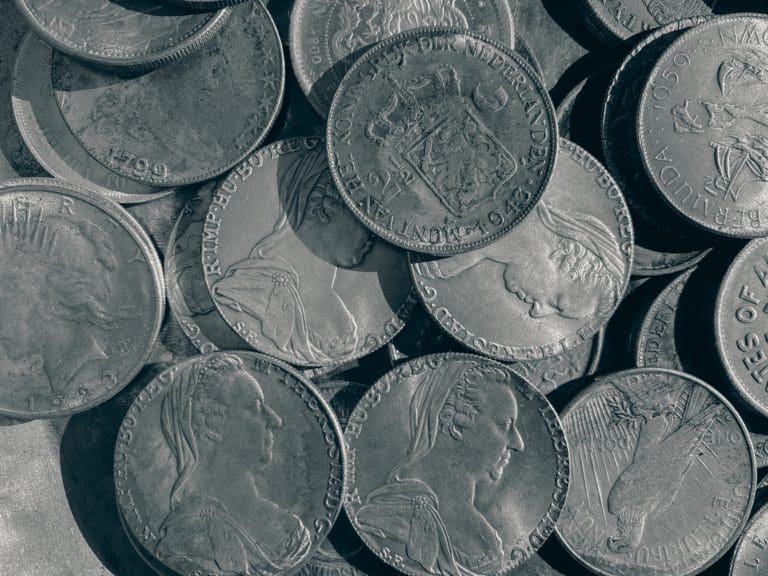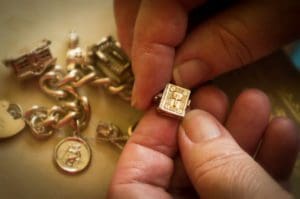What do we know about silver?
Silver is shiny, soft, and gray metal. It is a solid room and an excellent conductor that lets heat and electricity flow through it. Silver reacts with air over time and thus can become tarnished. Sometimes you will see silver jewelry or silverware that is tarnished or has this black coating.
It is believed that silver has been around and used for over 5,000 years. Silver is found under the ground in mines. Silver is mined in Peru, Poland, Norway, Canada, and the United States. Mexico has the most significant annual production. Americas Silver has two primary assets in the U.S. and Mexico: the Cosala operation in Mexico, including the San Rafael mine, and the Galena Complex in Idaho.
Most people agree when comparing gold to silver; gold is rare, but it is mainly mined above ground. On the other hand, silver mines are above ground mines are rarer than gold. Interestingly enough, silver is mined alongside gold, and it is found in an alloy called electrum and can also be found alongside lead, copper, and zinc ores.
How is Silver Mined?
According to Global X, silver is mined through open pit and underground methods. The open-pit process involves using heavy machinery to mine deposits at or slightly below ground level. In underground mining, deep shafts are dug to extract the ore, and the ore is first crushed and separated to achieve higher mineral concentrations. Only 28% of silver comes from mining activities where silver is the primary source of revenue.
Silver is used in various luxury goods such as jewelry, tableware, and fine art. Silver is also used in industrial uses because of its conductivity and high sensitivity to light. It is used in solar panels, LED lighting, and cellular technology, to list a few. Because of its wide variety of uses, it may be irreplaceable even if the price continues to go up.
The value of silver has continued to go up and down with a tendency to see higher and higher prices for each ounce of silver sold. Based on the spot price of silver, pawnshops and other metals buyers continue to offer services to buy silver. Silver isn’t gold, but it is undoubtedly worth money.
One area to consider if you require quick cash is to explore your old coin collection or jar and see if you have what is known as “junk silver coins.” These coins were minted before 1965 and were used as money in the United States. Junk silver coins are common, were used in circulation, and have no collector value. They are 90% silver, and these “junk silver coins” have no Numismatic value.

What is Numismatic Value?
The numismatic value is the price you can reasonably expect to receive if you sell the coin on the fair market. The coin can be circulated, uncirculated, or a proof coin from a collection. The fair market is set by the coin’s scarcity, the condition of the coin, and the demand for the coin.
Rare coins for coin collectors bring a higher price than common coins, and coin shops will often buy and sell rare coins for a premium.
What Is Your Pre - 1964 Coin Worth?
Coins would be 90% silver if minted in the U.S. before 1964. Because of the silver content, there is a difference between the face value and the silver content value.
For instance, the 1932-1964 Washington Quarter is a .25 piece. Face value is .25, and it has a silver value on today’s market of $4.00.
How To Value an Assortment of Silver Coins Dated Before 1964
The silver content in a coin dated before 1964 is calculated by the silver content of 90% and the coin’s weight multiplied by the current market value of silver.
Weight:
Weigh the coin or coins and calculate the silver value. If you have a 1 Troy Ounce, that ounce is worth about $24.00 in today’s market.
You know that the silver content is 90% silver, so the silver value of the coins based on weight and silver content is $21.60.
Silver is typically measured in troy ounces. A troy ounce contains approximately 31.1034768 grams of silver. This is higher than the standard ounce, which has 28 grams.
If you have Coins Minted Before or After 1964, Face Value Is:
Face value is just that, what is the coin’s denomination, and what is it worth. A twenty-five-cent quarter is worth .25, and a ten-cent dime has a face value of .10. If you have four quarters each worth .25, you have a total of $1.00 as the face value of the coins.
As a side note, $1.00 in coins has the same face value no matter the silver content.
Dimes:
- An 1892-1916 Silver Barber Dimes, 1916-1945 Silver Mercury Dimes, and 1946-1964 Silver Roosevelt Dimes all have the same weight and silver content.
- Weight:
- 2.5 grams
Quarters:
- An 1892-1916 Silver Barber Quarters, 1916-1930 Silver Standing Liberty Quarters, 1932-1964 Silver Washington Quarters all have the same weight and silver content.
- Weight:
- 6.25 grams
Half Dollars:
- An 1892-1915 Silver Barber Half Dollars, 1916-1947 Silver Walking Liberty Half Dollars, 1964 Silver Franklin Half Dollars all have the same weight and silver content.
- *Because of the weight of silver, half dollars are a great return on exchanging the silver value.
- Weight:
- 12.5 grams.
Notice Anything Unique About the Weights of the Dime, Quarters, and Half Dollars?
One dime weighs 2.5grams. So, five dimes will weigh 2.5×5=12.5grams and equally fifty
cents or a half dollars.
The weight of 12.5 grams matches the Half Dollar.
Confused? Let’s Clear It Up a Bit
This is why the calculations work. These minted coins are 90% silver, but the weights add up just like the denominations.
- One dollar in coin “Face Value” is equal to 25grams.
- Exceptions:
- A 1965-1970 Half Dollar is only 40% silver. A Morgan Dollars and Peace
- Dollars will weigh 26.73 grams. There are a few other exceptions, but
- generally, the rule above will apply.
Not everyone knows how to use face value to calculate value. Coin shops, pawnshops, and coin collectors prefer this method, and it is easy and quick math and never fails.

If You Want the Most Cash for Your Silver Coins - Know the Value
As the market changes, so do the spot prices for silver. The spot price is the current price in the marketplace that a coin can be bought or sold for immediate delivery. It is important to remember it changes daily. So check often.
What is a Premium?
Coin Shops and pawnshops charge a premium deducted from the percentage of the spot price they are willing to pay. Premiums are the associated costs that a business establishment incurs as a part of doing business. All stores that buy and sell silver, gold, valuable coins, and gold and silver bullion have to leave a profit margin, so they remain in business.
Silver products also come in the form of pendants, pure silver, modern silver bullion coins, silver bullion, silver bars, American silver eagle coins, a silver round, a silver bar, and 925 stamped silver jewelry.

Did you know that the highest mintage year for the Silver Eagle was in 2015 when it hit 47 million coins sold in one year? in 1986, the United States Mint launched its official silver bullion coin of America. It featured the iconic Walking Liberty design. The Royal Canadian Mint set an impressive standard when it introduced the Silver Maple Leaf in 1988, and it was one of the first to use .9999 pure silver content.
Silver rounds are primarily from private mints located in the United States and other places in the world. Silver rounds and silver coins have similar appearances, but there are some critical differences. A silver coin has an official face value, and silver rounds have a legal tender value and no face value. Compared to the Perth Mint owned by the state government of Western Australia the coins like the Kookaburras and Silver Kangaroos have a legal tender status through the Currency Act of 1965.
Consider Using a Local Pawn Shop in Your Area
Unlike online silver buyers, gold and silver coins buyers, and bullion buyers, most pawn shops offer in-store and online services. A team of experts supports pawnbrokers skilled in examining and appraising silver coins, silver jewelry, gold and silver coins, paper money, old coins, precious metals, sterling silver, and gold and silver bullion. You will be offered competitive prices for your valuables. Pawnshops are in the market to buy silver and sell precious metals, and they often have an online service that can sell valuable items with shipping costs added so you can get purchased items quickly.

Western Loan and Jewelry
Western Loan and Jewelry provides pawnbroker services in the greater Las Angeles, CA area. When you come to the store, you will be greeted by a professional and friendly team prepared to meet your needs. Western Loan and Jewelry is ready to sell, buy, or write a collateral loan for quick cash on all silver. The team at the shop knows how to create the best pawnshop experience for their customers through honest and transparent services. As you look through all the popular designs, cions, silver bars, and jewelry in stock, they will appraise your silver while you wait so you can sell it or trade it for something you would rather have. Their goals are to have you return to their store and continue shopping with them.




